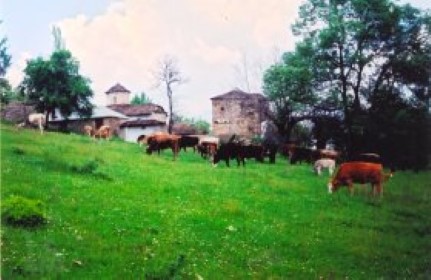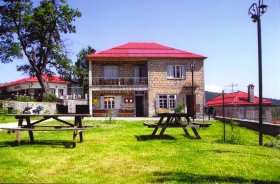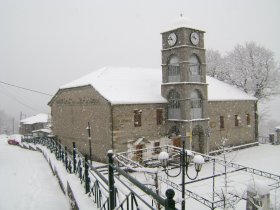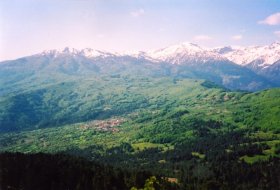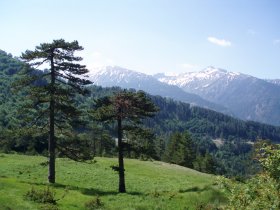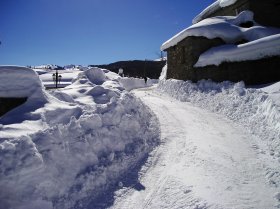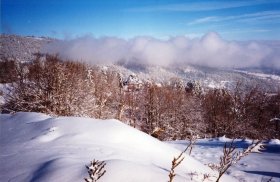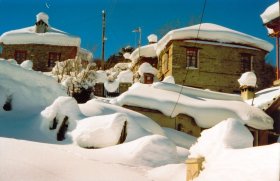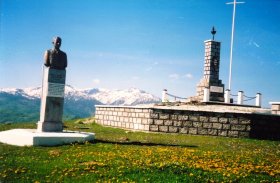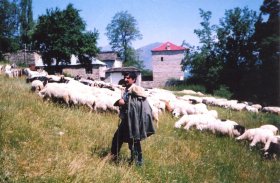Continuing the ascent to the valley of Vourkopotamos and at a distance of 11 km from Kerasovo, on the slopes that connect mountain Smolikas with Tambouri, we meet Fourka. The village is built amphitheatrically at an altitude of 1360 to 1450 meters and is 40 km from Konitsa and 21 km from the highway.
In the past, the inhabitants lived all year round and did not leave during the winter months, as it is the case in almost all other villages that are built higher than 1100 meters above sea level. The village is surrounded by rich forests of oak, beech, black pine and spruce, while important areas are occupied by grasslands. For this reason, animal husbandry and logging are the main activities of the inhabitants.
Fourka is a historical place. On the hill of Profitis Ilias, in the north, very deadly battles took place in 1940 during the Greek-Italian war. Colonel Konstantinos Davakis was wounded there, and Lieutenant Alexandros Diakos breathed his last.
The history of the village dates back to before the 16th century. The village emerged from the merger of four settlements: Paleochori, Liatsika, Mavrovo and Fourka. It had a population of 3,000 at the time and due to its mountainous location, taxes to the Ottoman administration were extremely low. Economic and social reasons as well as the escalation of robbery raids from present-day Albania (Kolonia) contributed to the dispersal of the villagers from the 17th to the 19th century. The wars of 1940-1949 and the later urbanization greatly reduced the population of Fourka.
Today, 25 permanent residents live in Fourka. They are engaged in animal husbandry and logging. In the summer, however, the village is enlivened by “Fourkiotes” who visit their birthplace. During the summer season, with the arrival of shifting cattle breeders and residents living in other cities, the population increases to 300 people.
The churches of the village are interesting (Agios Nikolaos, Agios Georgios, Agios Athanasios and Profitis Ilias) as well as the Cultural Center, the library and the Folklore Museum where there are many exhibits from the rural life of the village.
From the top of Tambouri and from the hill Profitis Ilias, which can be reached from the village by following a forest road or path, you can admire nature in all its glory. Wherever you turn your eyes, you will see forests, alpine meadows, ridges and ravines all around Smolikas and Grammos.
Every year, on the day of Profitis Ilias’ feast (July 20), the state officially honors the contribution of the woman of Pindos to the Greek-Italian war of 1940-41. From Fourka the road leads to Samarina (about 12 km) and the neighboring area of Grevena, while from the Monastery of Kladormis, which is located lower than the village, one can reach the national road of Konitsa-Kozani.
In the village there is a guest house for overnight, a coffee shop and a grill. Fourka, like most Vlach villages, celebrates on the 15th of August.

